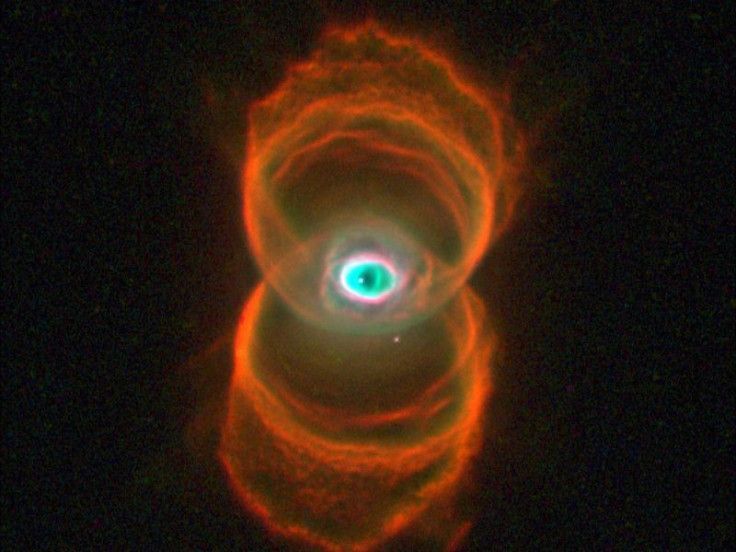Hubble Snaps Incredible Image Of Hourglass Nebula With Central Eye

KEY POINTS
- The Hubble Space Telescope shared an image of the Hourglass Nebula
- The nebula was formed by a dying red giant star
- The shape of the nebula was created by expanding stellar winds emitted by a dying star
The Hubble Space Telescope recently shared an image of a unique form of a nebula that was created by a Sun-like star that’s about to die. Due to the natural cosmic process that the star is going through, it has produced a unique shape that consists of an hourglass-like structure with a central glowing eye.
The massive cosmic object photographed by NASA and the European Space Agency’s (ESA) Hubble Space Telescope is a planetary nebula known as MyCn 18. It is situated about 8,000 light-years away from Earth and is located within the Musca constellation.
According to the ESA, the nebula was formed by a star that’s as big as the Earth’s Sun. As this star got older, it became larger and cooler and transformed into a red giant. This usually after the star’s fuel that sustains its nuclear energy runs about, which occurs about 10 thousand million years after it’s born.
As this happens, the red giant star begins to shed, casting off its outer layers. This creates a glowing outer ring around the star.
In the case of MyCn 18, its central bright eye, which is the expanding star, gives off high-energy solar winds. According to NASA, these expanding winds interact with dense clouds from their surroundings, which creates a unique hourglass shape around the red giant.
“According to one theory for the formation of planetary nebulae, the hourglass shape is produced by the expansion of a fast stellar wind within a slowly expanding cloud which is more dense near its equator than near its poles,” NASA explained in a statement.
“What appears as a bright elliptical ring in the center, and at first sight might be mistaken for an equatorially dense region, is seen on closer inspection to be a potato-shaped structure with a symmetry axis dramatically different from that of the larger hourglass,” the agency added.
In addition to its shape, the nebula is also characterized by various colors, which agencies believe represent the various elements being expelled from the star. As seen in Hubble’s photo, red represents nitrogen while the green and blue colors respectively represent the hydrogen and oxygen elements.
© Copyright IBTimes 2024. All rights reserved.





















